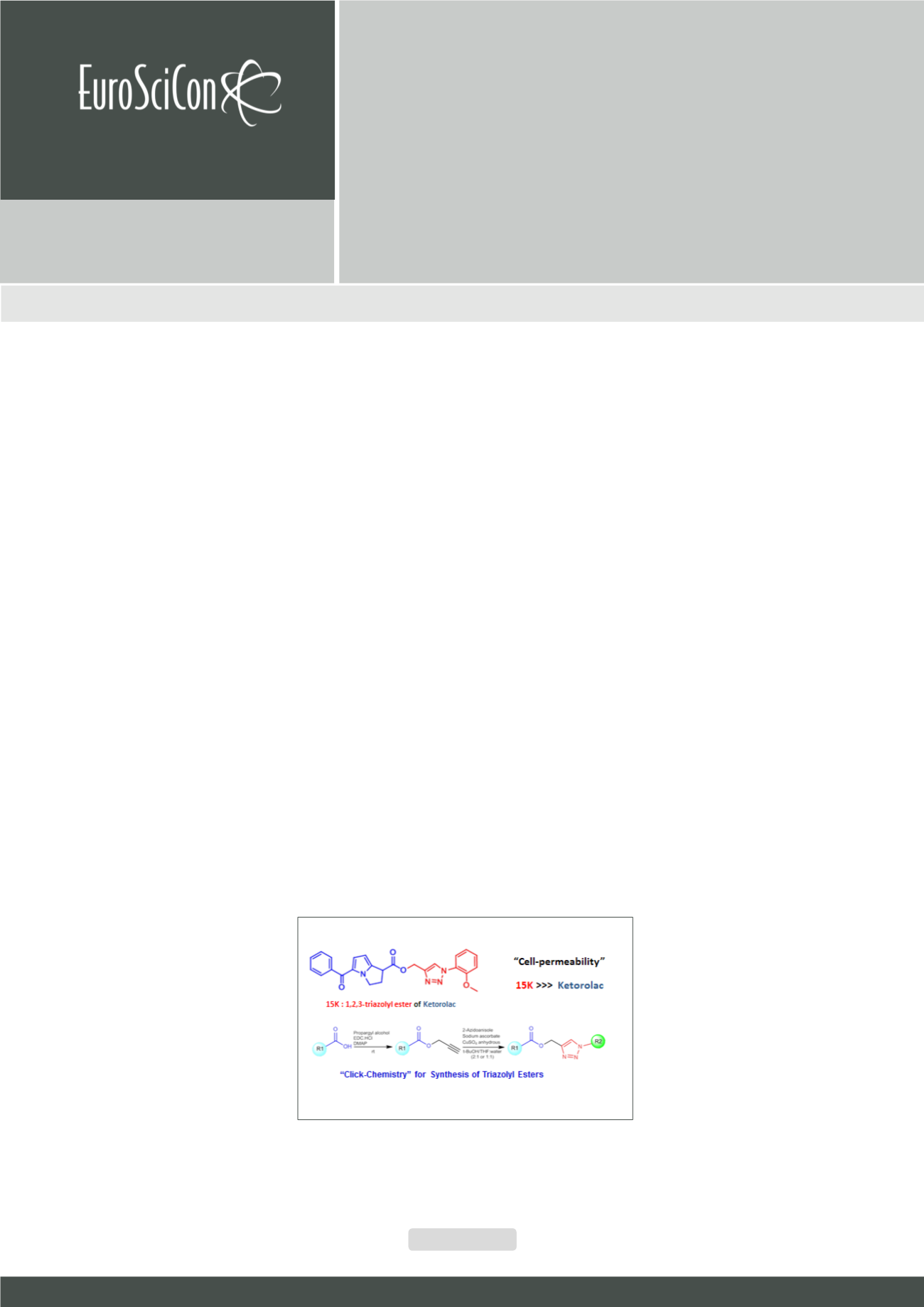

Medchem & Toxicology 2018
Page 67
Journal of Organic & Inorganic Chemistry
ISSN: 2472-1123
A n n u a l C o n g r e s s o n
Medicinal Chemistry,
Pharmacology and toxicology
J u l y 3 0 - 3 1 , 2 0 1 8
Am s t e r d a m , N e t h e r l a n d s
P
AK1 is the major oncogenic/ageing Ser/Thr kinase that is activated by p21 (RAC/CDC42) and several other signal transducers
such as PIX, three distinct Tyr-kinases (ETK, FYN and JAK2) and CK2 (casein kinase 2) in cells. PAK1 is essential for robust
growth of almost all solid tumors which require PAK1-dependent angiogenesis. Besides this, kinase is required for many other
diseases/disorders such as NF (neurofibromatosis), AD (Alzheimer’s disease), PD (Parkinson’s disease), depression, epilepsy,
autism, schizophrenia, a variety of infectious and inflammatory diseases, diabetes (type 2), obesity, and even hyperpigmentation.
Thus, the potential maket value of PAK1-blockers is enourmous. However, so far only a few PAK1-blockers are available on
the maket, such as FK228, Gleevec, and the old antibiotic called minocycline (MC) but with a very limited FDA approval for
cancer therapy. Thus, for a last decade, we have taken a great effort for identifying PAK1-blockers among natural or old (generic)
products as well as the robust potentiation of their anti-cancer/anti-PAK1 activity mainly by increasing their cell-permeability.
Here in this lecture, we shall introduce a few successful examples including 1,2,3-triazolyl esters of natural or generic COOH-
bearing PAK1-blockers such as UA (ursolic acid), ARC (artepillin C), CA (caffeic acid), Ketorolac and MPA (mycophenolic acid),
in which esterization by a simple reaction called CC (Click Chemistry) boosts their anti-cancer potential by 100-5000 times,
depending on target cancer cell lines and the final chemical products. One of them called “15K” (ketorolac ester) has been proven
to be among the most potent PAK1-blockers, suppressing the embryonic angiogenesis
in ovo
(fertilized chicken eggs) IC
50
around
1 nmol/egg, and extending significantly the healthy lifespan of
C. elegans
by 30% at 50 nM, strongly suggesting that they could
cure most of solid tumors without any severe side effect.
Maruta20420@yahoo.co.jpBoosting the anti-cancer potential of COOH-bearing
PAK1-blockers by increasing their cell-permeability
via click chemitry
Hiroshi Maruta
PAK Research Center, Melbourne, Australia
J Org Inorg Chem 2018, Volume 4
DOI: 10.21767/2472-1123-C3-009
Figure:
Click- Chemistry for Synthesis of Triazolyl Esters
















